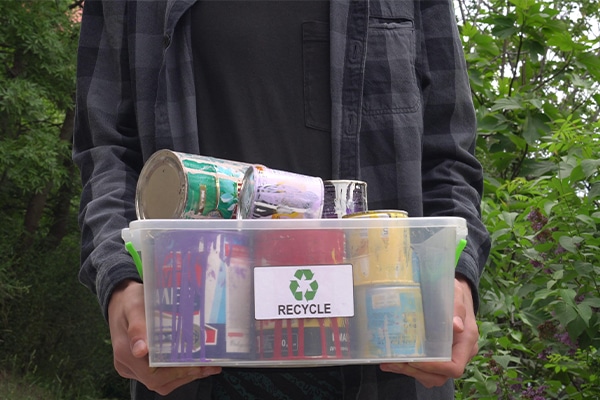How to Dispose of Hazardous Waste

Most homeowners accumulate, over the years at least a few things are going to require special methods of disposal. Unlike your basic toss-outs or recyclables, hazardous waste can be harmful to people, animals, and the environment if not disposed of properly, making it extra important to get rid of these sorts of materials the right way.
Below are a few tips regarding how to dispose of hazardous waste safely.
What items are considered to be household hazardous waste?
You’d be surprised to learn that you probably have a lot of these substances in your home already.
- Combustible and flammable materials. Substances that ignite and burn easily.
- Spare cans of gasoline
- Propane tanks
- Oxidizers
- Liquid with a flashpoint of less than 140 degrees Fahrenheit.
- Corrosive materials. Substances—usually liquid—that can corrode metal.
- All industrial strength cleaners
- Items that contain common strong acids such as hydrochloric acid or sulfuric acid – like drain cleaners
- Reactive materials. Substances that are unstable and prone to possible explosion.
- Aerosol cans
- Toxic materials. Substances that can be seriously harmful or even deadly upon contact, consumption, or inhalation.
- Paint
- Antifreeze
- Motor oil
- Weed killers
How to dispose of hazardous waste
- Research the laws of hazardous waste disposal where you live. Different counties have different rules, so read up on them before you do anything else. Simply search “how to dispose of hazardous waste” + “[your county]” to see what comes up.
- Read the product labels. Many household hazardous materials come with general directions about how to (and how not to) store and handle them.
- Schedule a home pick up. Contact your local waste management company and ask them if they offer home pick ups for hazardous materials. Many do, though you may incur a fee.
- If they don’t do home pick-ups, your local waste management authority might be able to recommend drop off services.
- Many waste management facilities are hazardous waste mail-in recycling kits. These kits are especially useful if you live in an area without home pick-up services. With the mail-in service, the company will mail you a special container to put your hazardous items into. Then you just mail it back. This is useful for properly disposing of used batteries, fluorescent bulbs, and printer cartridges—all of which cannot be simply thrown in the trash or recycling bin.
- Donate. If you can, try to donate your hazardous materials to somebody else who needs them. If you have leftover paint, for example, you may be able to donate it to Habitat for Humanity or a charity that is remodeling their facilities. And your local nursery may be able to put your extra fertilizer to use, while the auto garage can possibly take leftover motor oil.
Other tips for disposing of hazardous materials
- Keep materials in their original packaging. Certain hazardous materials pose a heightened threat when exposed to air or when moved into another type of container than they came in, so always stay on the safe side and leave these types of substances in their original containers.
- Handle empty containers with care. Chemical residue on the insides of containers can pose a hazard even after the material itself is gone. If you have empty hazardous waste containers, they’ll have to be disposed of just as carefully as if they still had product in them.
